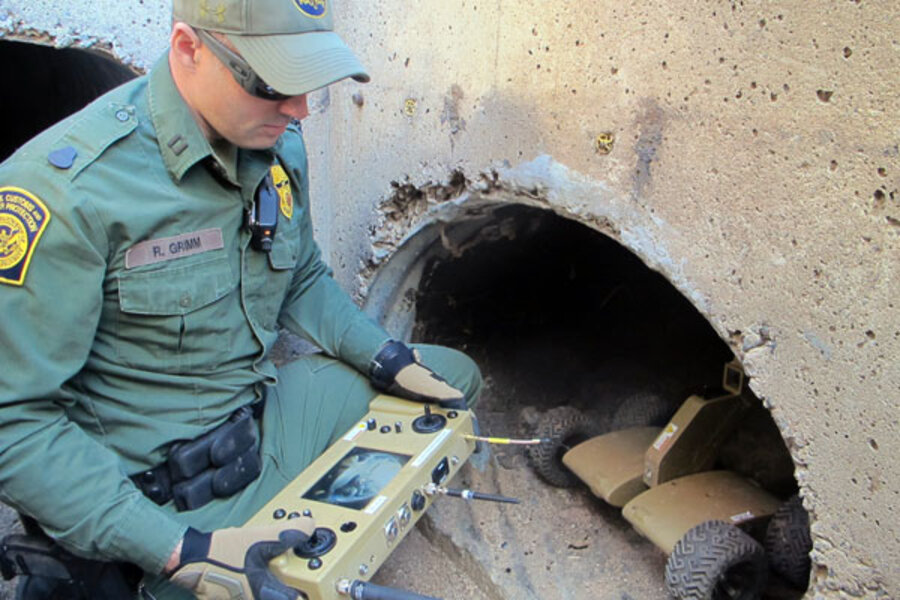Tiny robots to prowl US-Mexico border's dark drug tunnels
Loading...
| Nogales, Ariz.
The nation's increasingly high-tech battle against drug smuggling along the Southwest border just got another ally: a wireless, compact, camera-equipped robot.
Although the military for years has relied on robots for reconnaissance in conflict zones, the technology is fairly new on the US-Mexico border, where reinforced land, air and water surveillance has sent traffickers underground.
Since 1990, authorities have discovered 168 tunnels in Arizona and California used mostly to smuggle drugs. More than half were dug up along the border stretch in Nogales, Ariz., where covert diggers often breach an underground flood-control system to enter the US.
"We've found all types of contraband in Nogales," border patrol Agent Kevin Hecht says. "We've had marijuana, we've had cocaine, we've had heroine, we've had some meth."
The underground gadgets add to the border's growing collection of virtual surveillance tools that the federal government has bolstered in recent years, including camera towers, unmanned aerial drones, and a variety of wireless technologies.
In fact, the remote-controlled robot can transform into a terrestrial drone outfitted with a 12-gauge shotgun, but Agent Hecht says that feature won't be activated.
"That is not an option we needed right now," says Hecht, who notes that armed agents work to detect tunnels.
The small robot will make the job of agents who crawl into dark passageways more efficient, because they can be sent ahead to detect any potential threats, he adds.
"Once you determine there's no threats and it's safe for the agent to make entry, then the agent can clear the tunnel and investigate further beyond what the robot was able to do."
The military-grade Pointman Tactical Robot is only 19 inches wide and can flip, negotiate rough terrain, and climb stairs.
"Predominantly SWAT teams use them to get a look inside buildings before they enter," says Alex Kaufman, who works for Applied Research Associates, Inc., of Albuquerque, N.M., which sells the robot.
The robot's range and mobility will allow it to be more effective than the tethered robots currently used in the sometimes rudimentary, sometimes elaborate tunnels found along the border, he says.
Agents can control the robot for greater distances and "the fact that it's on wheels instead of tracks makes it easier to maneuver," he adds.
Hecht says the Pointman bested other robots he has tested in the tunnels. "Every robot I've tested to date has gone about 10 feet into a corrugated pipe and lost control," he adds. "These have gone through all the pipes without any problem."
Although dozens of agents undergo training to work in confined spaces, only some 12 agents regularly venture underground, he says. The two new robots will enable agents to speed up tunnel probes, says border patrol Agent Ryan Grimm, who showed off the agency's two new robots this week.
Normally, it takes three agents about an hour to monitor the air quality, structural soundness, and other conditions inside a passageway, he adds.
"Now we have a robot that's equipped with infrared and regular lighting so that you can go into these spaces," Agent Grimm says. "By myself, I can bring this robot down here and explore all of these tunnels within 20 to 30 minutes."







